Hay 3 formas de ganar en la Mobile App Store (Parte 1)
La App Store móvil es un mercado maduro y saturado. Si eres un recién llegado al espacio y piensas que todavía hay posibilidades de ganar, entonces es demasiado tarde. Eso solo existió entre 2008 y 2011. Desde 2012, el espacio ha sido una industria que está madurando rápidamente. La innovación es escasa, las barreras de entrada son más altas que nunca y el objetivo de llegar a estar entre los 10 juegos con mayor recaudación es una hazaña aparentemente imposible. Los ganadores de la telefonía móvil ya están decididos: tienen el dinero, el embudo largo y los usuarios para poder dominar las listas de mayores ingresos.
Lanzar un juego sin gastar más de 400.000 dólares en marketing de resultados o conseguir una característica destacada de Apple es una sentencia de muerte para tu juego. Por muy bueno que sea. Descubrir en la AppStore ya no es fácil ni gratuito. No espere llamar la atención a menos que invierta seriamente en su descubrimiento.
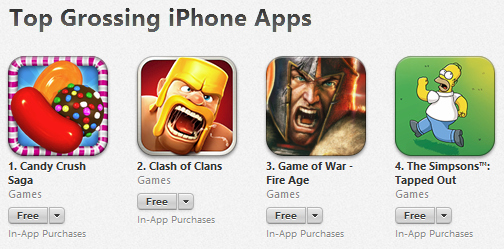
Muchos de los 10 juegos con mayores ganancias han estado en las listas durante más de un año. Como compites con eso?
Entonces… como desarrollador en el mercado, ¿qué haces? ¿Cómo ofrecer una jugabilidad nueva y excelente a la audiencia móvil masiva sin verse eclipsado por los desarrolladores más importantes?
Al observar la tabla de mayores ingresos de los últimos 2 o 3 años, puedo ver tres formas claras en las que los juegos se convirtieron en un éxito. Para obtener suficiente descubrimiento en la AppStore, en mi opinión, debemos centrarnos en uno de estos 3 caminos. Cada uno es extremadamente difícil, pero cada uno tiene el potencial de triunfar.
- Característica o fracaso: haz todo lo que puedas para obtener una característica.
- Gratis para pagar hasta llegar a la cima: optimice para CPI y LTV. Juegue el juego del marketing de resultados.
- Sensación viral: ten suerte y crea un juego que explote por sí solo.
Hoy hablaré del número 1, luego terminaré con los números 2 y 3 la próxima semana.
#1: Característica o fracaso
No es lo mejor para Apple ni para Google que el mercado ya no esté innovando.
Apple y Google quieren que salgan juegos novedosos cada semana en la AppStore. Esto lleva a los clientes a visitar la tienda con frecuencia. También es más probable que estos clientes paguen por probar nuevos juegos.
Apple y Google trabajan duro para luchar contra esta tendencia. Tienen control total sobre el descubrimiento en la AppStore y lo mejor para ellos es encontrar juegos que muestren su hardware y brinden experiencias increíbles a los jugadores. Juegos como Room, Monument Valley y Leo's Fortune llevan a los clientes a visitar la AppStore cada semana. A los jugadores les encantan estas experiencias y quieren encontrar juegos nuevos y emocionantes.
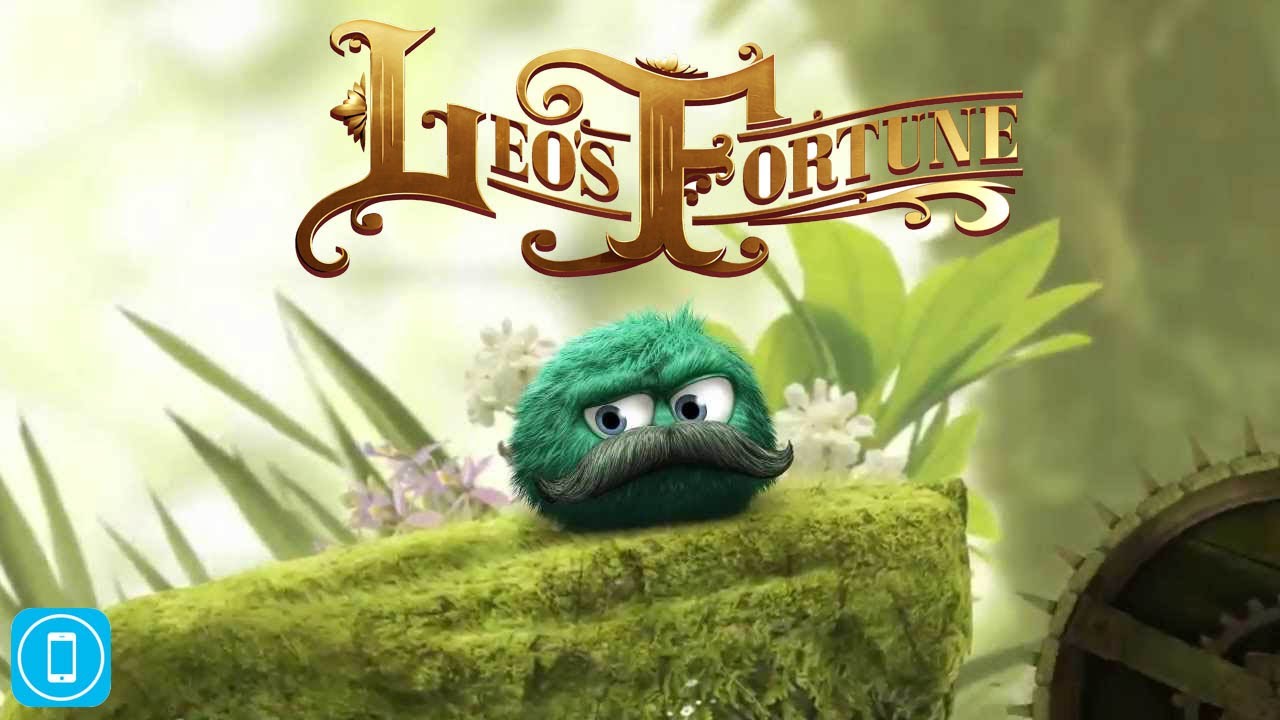
https://play.google.com/store/apps/details?id=com.leosfortunehl=en
Entonces, una manera de lograr el éxito en la AppStore es trabajar lo más estrechamente posible con los propietarios de la plataforma (Apple o Google) para garantizar la mejor presentación posible. Crea un juego que tenga una mecánica novedosa, se vea hermoso y muestre el hardware.
Todo esto parece una elección fácil. Crea un juego que sea lo suficientemente bueno como para que Apple lo presente. Pero cada semana se envían a Apple más de 1000 nuevos juegos/aplicaciones. ¿Estás seguro de que eres el primero de todas esas entradas?
Cada semana, desarrolladores experimentados de consolas y juegos AAA para PC trasladan sus famosas franquicias a la plataforma. ¿Crees que tu juego es más digno de ese puesto que el próximo juego “Call of Duty” para iOS? Cada semana, los desarrolladores independientes lanzan sus juegos en los que han invertido más de 4 años de su vida trabajando desde su garaje. ¿Puedes competir en calidad con estos muchachos? Cada semana se lanzan franquicias cada vez más grandes, por lo que crear un nuevo juego en este espacio no es tan simple como simplemente charlar con Apple o Google unas semanas antes de su lanzamiento.
Se trata de arte, experiencia y novedad.
Para abordar esto, eche un vistazo a algunos de los juegos que Apple ha presentado en los últimos meses. Cada semana hay un nuevo juego destacado en la AppStore. Cada uno de ellos está bellamente hecho y enfocado en crear una experiencia increíble. El listón está alto: Apple sólo te presentará si puedes competir con todos los demás desarrolladores que llaman a su puerta.
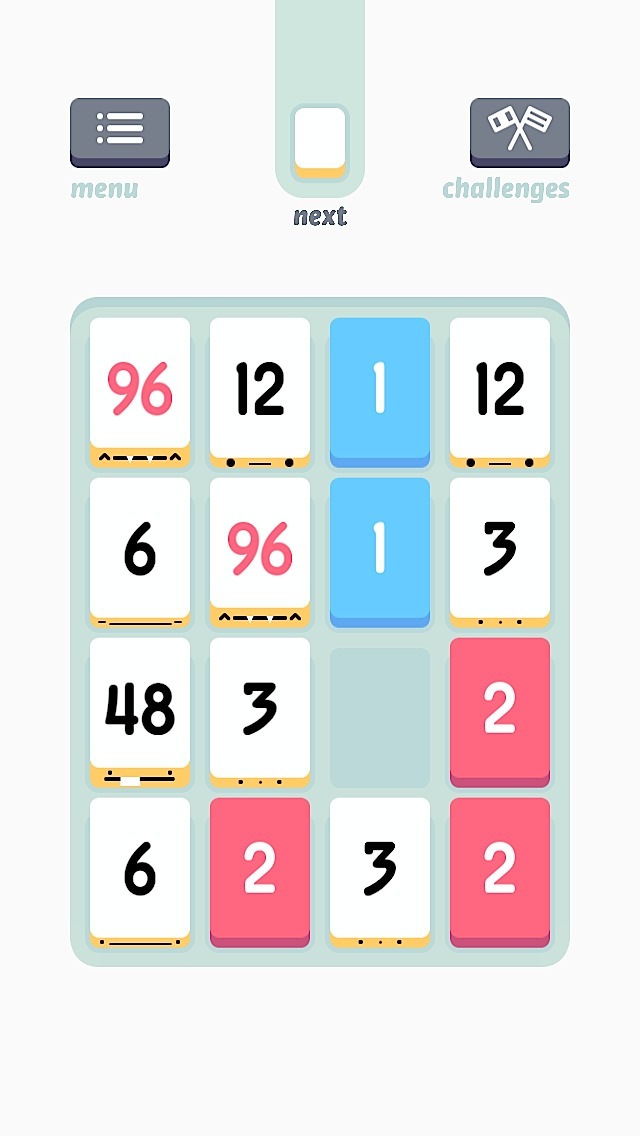
¿Pueden la mecánica y el estilo visual de tu juego competir con Threes?
Para saber qué tan lejos está de aparecer destacado, comience a probar como usuario su paquete de productos (icono y capturas de pantalla).
Empiece por incorporar algunos jugadores externos e imparciales para que prueben su juego. Pídales que miren su ícono y sus capturas de pantalla, luego compárelos con juegos destacados recientemente. ¿Cuál preferirían comprar? Si tu juego no los convence por completo, piénsalo de nuevo. Apple solo selecciona lo mejor de lo mejor, así que asegúrate de comenzar con fuerza: crea una identidad de producto sólida que muestre las diferencias de tu juego desde el principio. Clave el ícono y las capturas de pantalla antes de comprometerse con el desarrollo. Este método te ayudará a concentrarte en la obra de arte y en la comunicación de tus características diferenciadoras. Si no puedes comunicar por qué tu juego es único y vale la pena jugarlo con un ícono y algunas capturas de pantalla, los clientes no comprarán tu producto y Apple no te presentará.
Como presentó Ken Wong en su increíble discurso en la GDC Europa , este modelo de mercado funciona para juegos que se centran en crear experiencias estéticas asombrosas. Este no es un modelo para juegos que se centran en la diferenciación sólo en sus mecánicas. Este modelo depende de crear una experiencia de juego que sea increíblemente memorable. Debería tener a toda tu audiencia tuiteando y celebrando su finalización:

Del sitio web de Monument Valley: algunos ejemplos de reseñas de Monument Valley
But when going with this business model, its important to focus on what matters, and not stretching yourself too thin when deliveringthe game.

http://windosill.com/ Windosill is a game that is really the best example of a visceral interface. Each action you do feels alive, organic and interesting. Aim for this feeling when creating the best aesthetic experience.
Focus on simple, intuitive mechanics that promote your aesthetics over complex mechanics that focus on niche audiences or require a high entry barrier to understand the mechanics.Like Windowsill, focus on making everything feel interactive and alive.
Focus on amazing artwork and aesthetic setting. These types of games should be started from a piece of artwork over a simple prototype displaying the mechanics. The story, setting and theme should come first, then mechanics afterwards. Showing potential players early your artwork and videos of your game should excite and build anticipation from players. The artwork should seek to pull players in just by seeing a small percent of the game play. When you’ve got your artwork to the point that its exciting your potential players, then it’s okay to start.
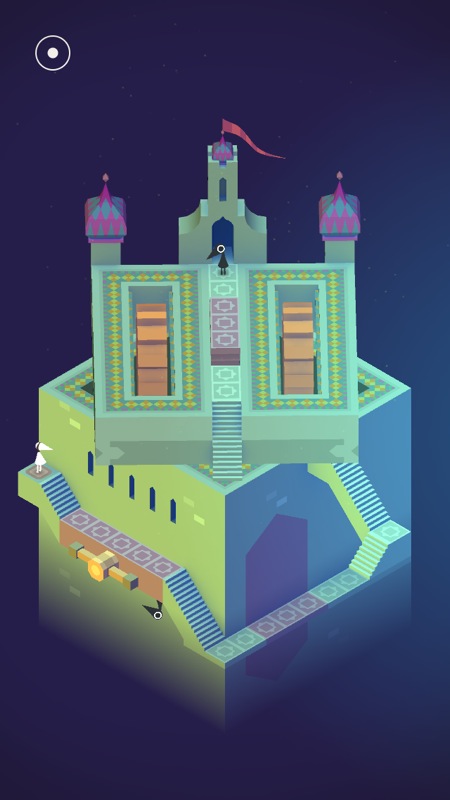
Monument Valley is a short game — but celebrated as so.
The game doesn’t need to be difficult or balanced perfectly. You just need to make sure the mechanic lasts for 2-4 hours on their device. Building a long lasting game will most likely be a waste of content, players on mobile download a new featured game once per week. They like experiences that are bite-sized but don’t require hours and hours to fully enjoy. As you can see from the Monument Valley response, the audience is not turned off by the shortness of the gameplay — its seen as a positive point.Don’t attempt to build a full console title worth of content if you don’t need to.
Focus on the Experience, not onMonetization
In my opinion, this path should focus ongames that arepaid, not free. This is somewhat controversial because youcouldmake more money if you go free,but free with in-app purchases will push to make design decisions that are bad for your overall experience. Unless you really know what you’re doing, I would always suggest to go paid. You can then focus on what will get you the feature: amazing artwork, intuitivecontrols, and simplicity. Injecting Ads, In-App Purchases or monetization tricksis nota simple path. There is still a massive audience that is perfectly okay with purchasing games. This audience is looking for novel gameplay and gorgeous artwork, so don’t go half way and deliver an okay experience so you can have your cake and eat it too by trying to squeeze every dollar out of your players.
Keep focused on creating an amazing experience, ditch the free to play.
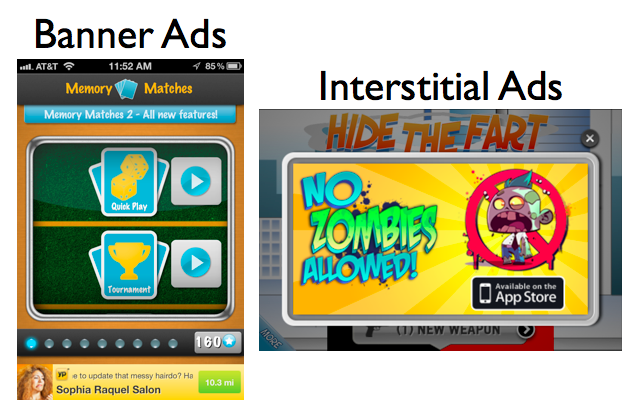
Ads and interstitials will only hurt your chances of getting featured. Stay focused on the experience, not on the money.
Price point for a paid game is a big debate. I would suggest going higher than you think. Featuring lasts between 1 week to2 weeks. After this window, youwill have very little discovery. Making sure you make as much moneyduring this small window is very important. As a feature, players are far less price sensitive.If Apple has featured you, you must be worth the price! After these 2 weeks you can consider doing some promotional pricing. This may stir up downloads,but by that point your discovery will be so small. These price drops will only give you temporary small boosts.
To give you some pointers on price point, I would say $0.99 is only for games that look very simple and is more of a “while riding the subway” kind of distraction (ex. Threes). $2.99-$4.99 should be for games that provide4-8 hours of content, andlook amazing (ex. Monument Valley). $9.99 to$14.99 should be reserved for games that you believe players will get a “console-like” experience from: 10+ hours of fun, amazing graphics, and have a big developer or a big brand to push players over the hump when deciding whether or not to purchase the game.
You won’t be a millionaire
Gamesthat are paid don’t make nearly as much money as free to play games. Atop grossing free game makes hundreds of thousands of dollars each day, and usually can float within the top grossing charts for 6 months to over 3 years (Diamond Dash just celebrated its 3 year anniversary on iOS). The typical featured paid game will struggle to make that in its lifetime. Unless you get the editor’s choice and are featured predominantly on both platforms like Threes, Monument Valley or The Room, you will be looking below $1 million in total revenue. So when developing your game, keep in mind the risk of not being featured as well as the likelihood of being able to create a profitable game. Keep your development costs as low as possible.Having a 100+ person studio cranking out paid games is incredibly risky, the likelihood of being able to crank out hit after hit at a fast enough pace is very, very slim. Which is why most major developers have moved to free to play.
Also consider whether a full “games as a service” model works for you.Launching a game, then updating it each month isa big cost. Testing and resubmitting always takes far more time than you think it should. Ensure that the cost of updating your game as well as the amount of hassle to update the game each month is actually worth it to your bottom line. These types of games can be launched then updated only when necessary. Free to Play games are more likely to be updated on a monthlybasis.
You don’t need a publisher
Publishers have been fighting for a place in the mobile market for awhile. Publishers made a lot of sense during the console era. During this era they handled communication certification with the platform owner (Nintendo, Sony). They managed publishing and distribution of your game (shipping the physical package). They had the marketing budgets and contacts required to ensure your game was discovered by players everywhere.
But mobile doesn’t need that. Distribution is free, you can sign up for an account for $100/year to publish with Apple. Marketing and discovery is mostly handled by Apple if you aim for featuring. Certification is all done through apple review.Yet still therehavebeen a few bigger publishers that have grown over the years, most notably is Chillingo. Publishers take between 10% to 30% and offer some help with discover-ability. They usually help mitigate conversations with the platform owners (ex. Apple), canprovide support with performance marketing, and sometimes have a sizeable cross-game network to push players from one game to another.
However, you don’t need a publisher to get a contact at Apple or Google. Getting a developer contact at either of these companies is relatively simple, and just requires a little bit of networking. From here, keeping in close contact with them and sending builds and getting feedback from them is usually not difficult andprovides great value. It’s in Apple and Google’s best interest that indie developers can work with them. It’s in Apple and Google’s best interest that they have direct communication with developers and that they can identify the best games coming up the pipeline as quickly as possible.
Publishers can help out with discoverability by doing some performance marketing.However if you’re going for a paid game, performance marketing is ineffective. Its more than likely that a publisher will not invest money into performance marketing unless the CPI to LTV equation works. I’ve never seen this work for a paid game. Most publishers never agree to a minimum marketing spend or a minimum users delivered for this reason.You will get the most amount of users from featuring from Apple, so you may as well focus on them. Also many publishers can deliver a ton of users using cross-game networks, but rarely are these users very active or engaged in the game.
Publishers biggest value is to provide consulting and comments on your game while its in development to help you launch it with the best chance of featuring. So if that value makes sense to you, then get a publisher.If you’re already a competent mobile developer that is comfortable with networking with Google and Apple, a publisher is not the best path.
Make it amazing or don’t launch it at all
Esto va en contra del punto anterior. Tienes un techo más bajo al crear este tipo de juego que un juego gratuito. Sin embargo, todavía estás compitiendo con miles de otros desarrolladores cada semana para captar la atención de Apple y, en última instancia, de los clientes. Necesitas crear un juego que supere a todos los juegos de otros desarrolladores por al menos un margen mensurable. Si no alcanza esta marca, aunque sea por un poco, corre el riesgo de aparecer mínimamente o de no aparecer en absoluto. Cuando esto sucede, todos los costos hasta este punto se pierden: todo ese tiempo que dedicaste a desarrollar el juego, comercializarlo, obsesionarte con el diseño y la experiencia es completamente inútil. Tu juego caerá al sótano de la papelera de ofertas de la AppStore y nunca será visto por las masas. Esta es la parte más difícil de este mercado móvil y de la industria en su conjunto. Estamos atrapados en una carrera armamentista masiva entre miles de desarrolladores de juegos. Cada desarrollador busca superar a todos los demás para acercarse cada vez más a esta característica que es absolutamente crítica para el éxito. Juegos increíbles cada semana caen al fondo por la única razón de que hay demasiados desarrolladores que intentan este modelo de negocio. Demasiados desarrolladores se están centrando en juegos pagos y estéticamente enfocados en los que Apple y Google realmente pueden elegir. Al final, el costo del desarrollo y la barrera de entrada seguirán aumentando.
Si eliges este camino, hazlo al máximo o no lo hagas en absoluto. Concéntrate en crear un juego que sea incluso mejor que tres, Monument Valley o Leo's Fortune o no publiques nada.
Otras lecturas
“App Discovery is not Broken” de Eric Seufert
Un artículo sincero que describe el estado actual del mercado móvil. Cómo se ve una AppStore madura.
“Monument Valley: Menos juego, más experiencia” por Ken Wong
Cómo se creó Monument Valley y un argumento de que Free to Play no funciona para todos.
Leave a Reply